Hamidreza Farhidzadeh
Hippocampus Temporal Lobe Epilepsy Detection using a Combination of Shape-based Features and Spherical Harmonics Representation
Dec 28, 2016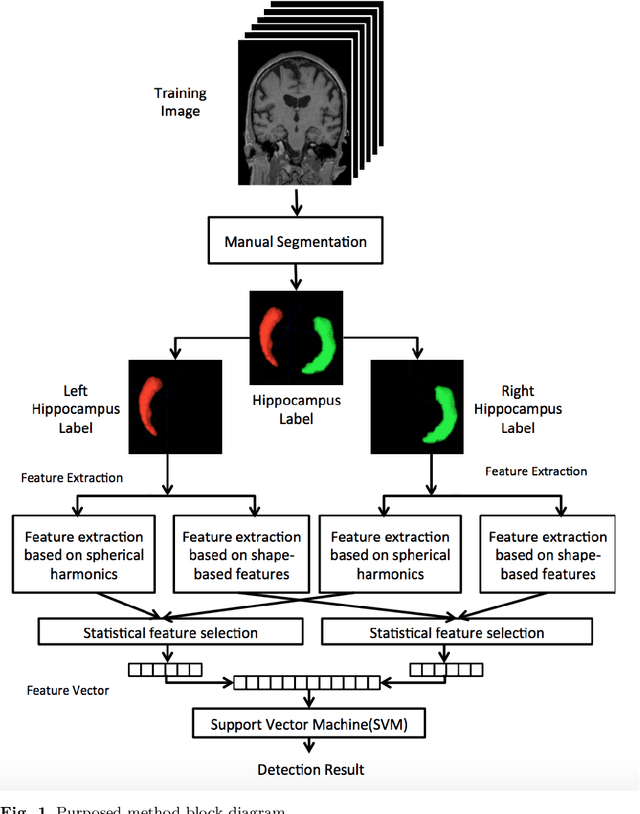
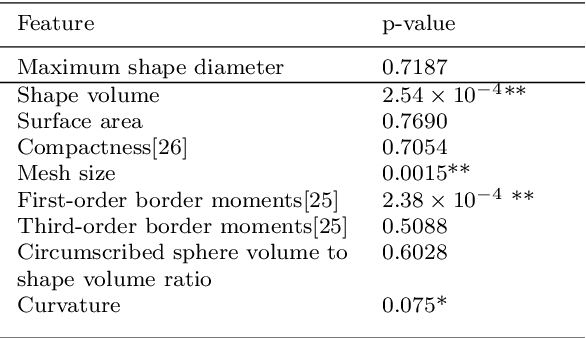

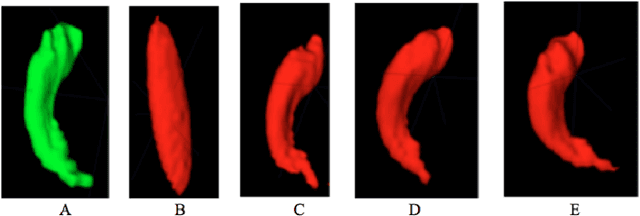
Abstract:Most of the temporal lobe epilepsy detection approaches are based on hippocampus deformation and use complicated features, resulting, detection is done with complicated features extraction and pre-processing task. In this paper, a new detection method based on shape-based features and spherical harmonics is proposed which can analysis the hippocampus shape anomaly and detection asymmetry. This method consisted of two main parts; (1) shape feature extraction, and (2) image classification. For evaluation, HFH database is used which is publicly available in this field. Nine different geometry and 256 spherical harmonic features are introduced then selected Eighteen of them that detect the asymmetry in hippocampus significantly in a randomly selected subset of the dataset. Then a support vector machine (SVM) classifier was employed to classify the remaining images of the dataset to normal and epileptic images using our selected features. On a dataset of 25 images, 12 images were used for feature extraction and the rest 13 for classification. The results show that the proposed method has accuracy, specificity and sensitivity of, respectively, 84%, 100%, and 80%. Therefore, the proposed approach shows acceptable result and is straightforward also; complicated pre-processing steps were omitted compared to other methods.
Probabilistic Neural Network Training for Semi-Supervised Classifiers
Sep 03, 2015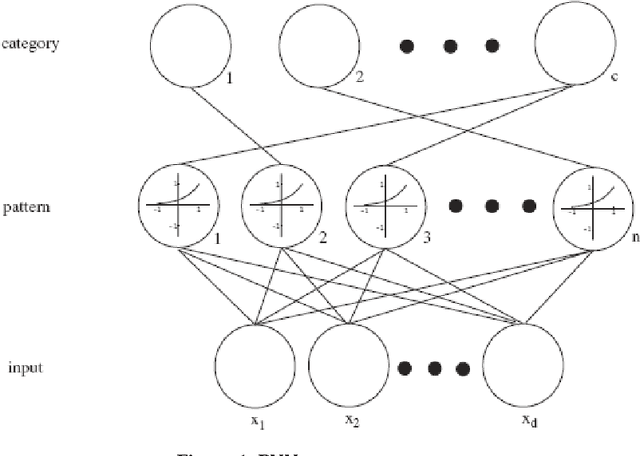
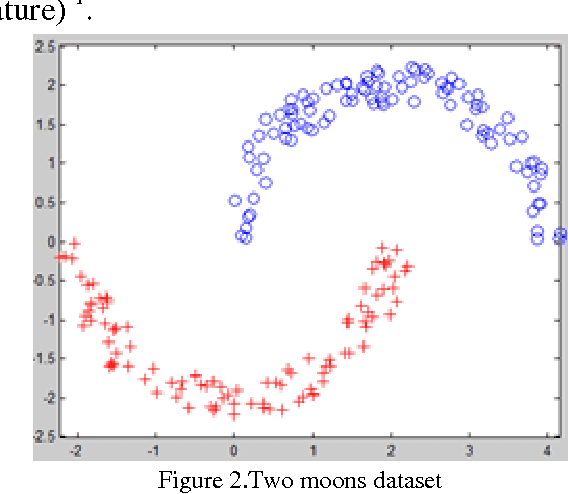
Abstract:In this paper, we propose another version of help-training approach by employing a Probabilistic Neural Network (PNN) that improves the performance of the main discriminative classifier in the semi-supervised strategy. We introduce the PNN-training algorithm and use it for training the support vector machine (SVM) with a few numbers of labeled data and a large number of unlabeled data. We try to find the best labels for unlabeled data and then use SVM to enhance the classification rate. We test our method on two famous benchmarks and show the efficiency of our method in comparison with pervious methods.
Machine Learning Methods to Analyze Arabidopsis Thaliana Plant Root Growth
Sep 03, 2015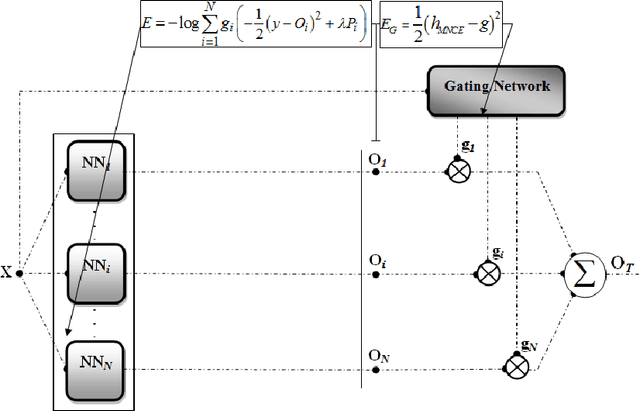
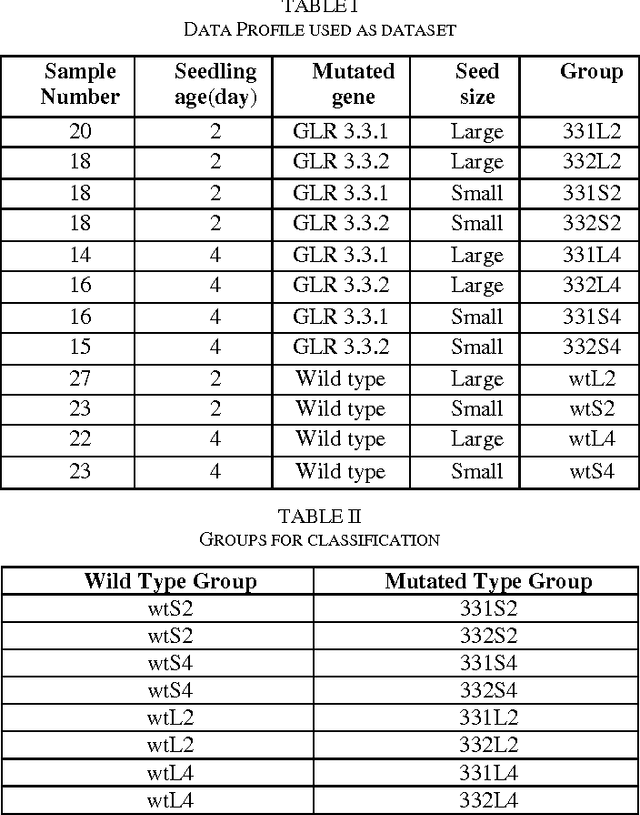
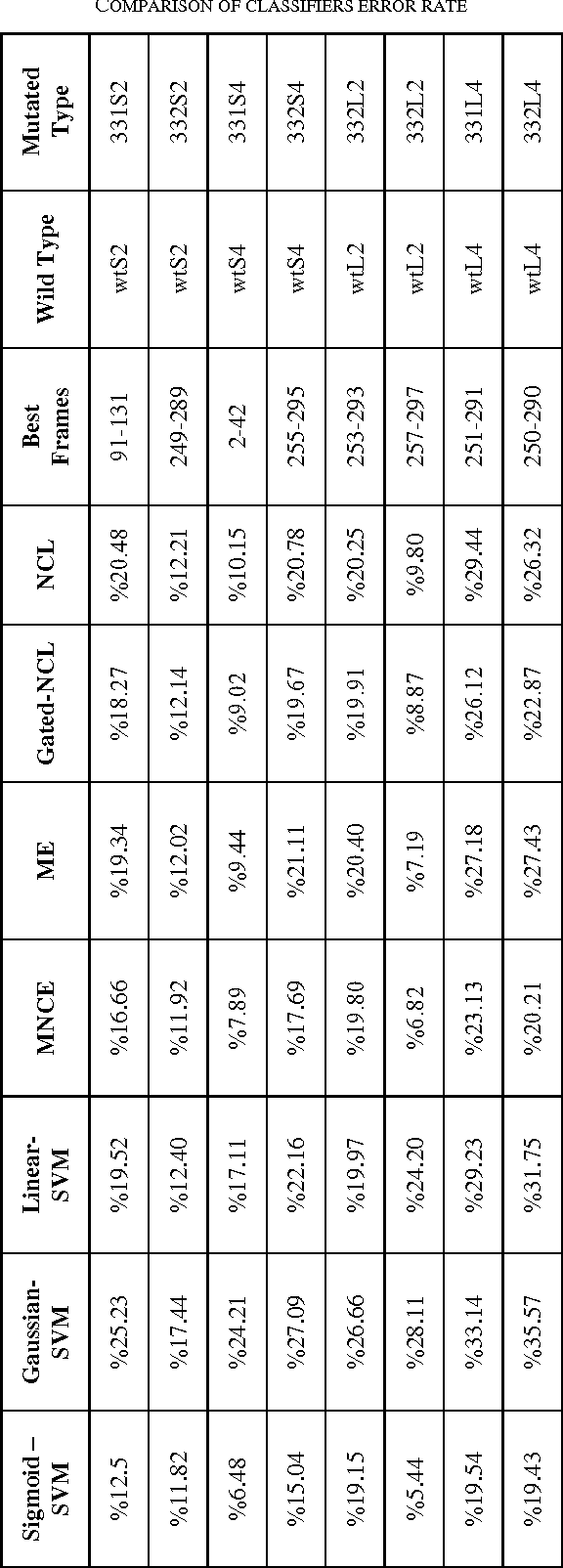
Abstract:One of the challenging problems in biology is to classify plants based on their reaction on genetic mutation. Arabidopsis Thaliana is a plant that is so interesting, because its genetic structure has some similarities with that of human beings. Biologists classify the type of this plant to mutated and not mutated (wild) types. Phenotypic analysis of these types is a time-consuming and costly effort by individuals. In this paper, we propose a modified feature extraction step by using velocity and acceleration of root growth. In the second step, for plant classification, we employed different Support Vector Machine (SVM) kernels and two hybrid systems of neural networks. Gated Negative Correlation Learning (GNCL) and Mixture of Negatively Correlated Experts (MNCE) are two ensemble methods based on complementary feature of classical classifiers; Mixture of Expert (ME) and Negative Correlation Learning (NCL). The hybrid systems conserve of advantages and decrease the effects of disadvantages of NCL and ME. Our Experimental shows that MNCE and GNCL improve the efficiency of classical classifiers, however, some SVM kernels function has better performance than classifiers based on neural network ensemble method. Moreover, kernels consume less time to obtain a classification rate.
 Add to Chrome
Add to Chrome Add to Firefox
Add to Firefox Add to Edge
Add to Edge